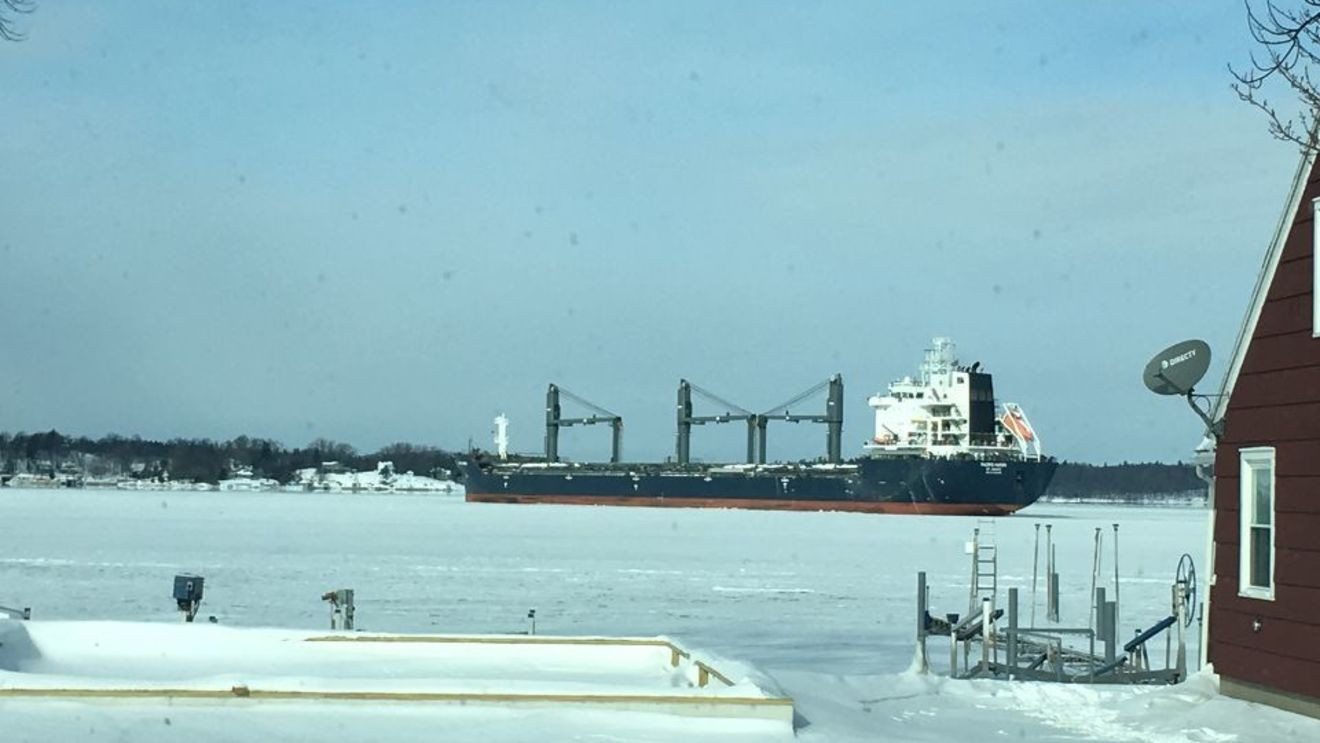A cargo ship ran aground in the St. Lawrence Seaway near Kahnawake, Quebec, on Thursday evening, blocking traffic for at least six other vessels. The ship, the Heemskerkgracht, lost all engine power and ran aground on the dike at the entrance to the South Shore Canal, which bypasses the Lachine Rapids and the Greater Montreal area.
The ship, which is 138 meters long and 21 meters wide, is blocking the waterway completely because it is lodged at an angle in the narrow passage. The incident occurred around 7:30 p.m. EDT.
The Heemskerkgracht, a Dutch-flagged ocean vessel, was en route to Spain, carrying scrap metal. It had just left the Côte-Sainte-Catherine lock when it lost power, according to Jean Aubry-Morin, spokesperson for the St. Lawrence Seaway. The ship's mechanical failure caused it to lose its steering ability, causing it to run aground on the shore. The cause of the breakdown is unknown at this time.
The ship, which is carrying a load of scrap metal, is not carrying any dangerous materials and there have been no reports of a fuel leak, according to the Canadian Coast Guard.
"We can confirm a grounding at 6:35 p.m. of an ocean vessel, the Heemskerkgracht, which had just left Côte-Sainte-Catherine [lock] to head to Spain,” said Jean Aubry-Morin, spokesperson for the St. Lawrence Seaway.
Crews are currently working to refloat the ship, according to Aubry-Morin, who also said that there have been no environmental damages or injuries to the crew.
The St. Lawrence Seaway is currently being used by businesses as an alternative to the rail network for grain exports due to the ongoing rail labor dispute.
The incident is reminiscent of the Ever Given, a supercargo that blocked the Suez Canal for six days in the spring of 2021, but is "very rare," Aubry-Morin said. “Out of 4,000 transits last year, we had only one similar case."
The incident has caused a traffic jam for other vessels. Six ships are currently at a standstill near Montreal, and that number could rise to "12 or 14" by Saturday noon, when the ship is expected to be freed, according to the Seaway.
The Heemskerkgracht, which is 138 meters long and 21 meters wide, has a carrying capacity of 12,000 to 14,000 tons and has a crew of about 20.
The St. Lawrence Seaway is a major waterway that connects the Great Lakes to the Atlantic Ocean. It is used to transport a variety of goods, including grain, oil, and minerals. Over 200 million tons of cargo are transported on the St. Lawrence Seaway every year.
This incident occurs at a time when maritime cargo transportation is emerging as an alternative to rail transport, which is threatened by labor disputes at the two largest railway companies in the country, Canadian Pacific Kansas City (CPKC) and Canadian National Railway Company (CN).
The ship's bow will need to be unloaded of its ballast water and fuel before it can be moved.
"We’re shifting the load inside the hull so the bow of the ship is lighter and we are then able to move it," explained Aubry-Morin. Before resuming its journey, the Heemskerkgracht will have to be taken to an inspection point to determine if any repairs are necessary.
Environmental Impact and Public Safety
The ship is not carrying any dangerous materials and there have been no reports of a fuel leak, according to the Canadian Coast Guard.
The Director of Public Safety for Kahnawake, Lloyd Phillips, assured the public that there was no sign of major damage and no leaks from the cargo or fuel, which was the main concern for public health and safety, but also for the environment.
“We are in contact with the Seaway authorities and the Coast Guard to collaborate and ensure there is no risk to the public,” said Phillips.
The Future of the Heemskerkgracht
The ship will be towed to the port of Côte-Sainte-Catherine for engine repairs, after which it will be cleared to resume its journey.
What This Means for The St. Lawrence Seaway
The St. Lawrence Seaway is a vital waterway for trade and transportation in Canada. The blockage of the waterway is a major disruption to the flow of goods, and the incident highlights the importance of maintaining a reliable and efficient transportation network.
This event will likely have a significant impact on the flow of goods through the St. Lawrence Seaway. It remains to be seen what the long-term effects of this incident will be.

















